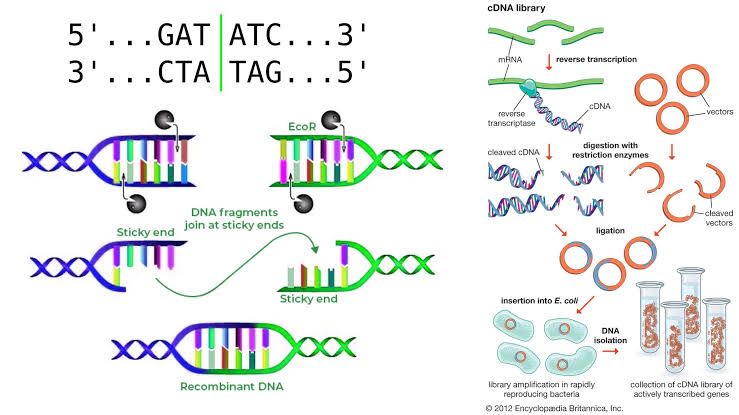
Restriction endonucleases, commonly known as restriction enzymes, are proteins produced by bacteria that can cut DNA at specific sequences. They play a crucial role in molecular biology, particularly in genetic engineering and cloning. There are several types of restriction endonucleases, each with distinct characteristics and functions.
Types of Restriction Endonucleases
1. Type I Endonucleases: Type I restriction enzymes are complex proteins that possess both restriction and modification activities. They recognize specific DNA sequences but cleave the DNA at sites that are far from the recognition site. This type of enzyme requires ATP for its activity and is less commonly used in laboratory applications due to its complexity and requirement for additional cofactors.
2. Type II Endonucleases: Type II restriction enzymes are the most widely used in molecular biology. They recognize specific palindromic sequences (usually 4-8 base pairs long) and cut the DNA within or near these sites. Unlike Type I enzymes, Type II endonucleases do not require ATP for their activity, making them more straightforward to use in laboratory settings. Examples include EcoRI, HindIII, and BamHI.
3. Type IIs Endonucleases: Type IIs restriction enzymes also recognize specific sequences but cut outside of their recognition sites. This allows for more versatile applications in cloning and gene editing because they can create unique overhangs on the ends of DNA fragments. An example of a Type IIs enzyme is BsmBI.
4. Type III Endonucleases: Type III restriction enzymes require two recognition sites to function and cleave DNA at a defined distance from these sites. They also require ATP for their activity. These enzymes are less commonly used than Type II enzymes due to their more complex requirements.
5. Type IV Endonucleases: Type IV restriction enzymes target modified DNA, such as methylated or hydroxymethylated DNA. They play a role in bacterial defense mechanisms against foreign genetic material but are not typically utilized in standard molecular biology techniques.
Isoschizomers and Neoschizomers
- Isoschizomers: These are different restriction enzymes that recognize the same nucleotide sequence and produce identical cuts in the DNA.
- Neoschizomers: These refer to different enzymes that recognize the same sequence but cut at different locations within or around that sequence.
Understanding these terms is essential for selecting appropriate enzymes for cloning experiments or other applications involving DNA manipulation.
Star Activity
Star activity refers to a phenomenon where certain restriction enzymes exhibit altered specificity under non-optimal reaction conditions (e.g., high glycerol concentrations, incorrect pH). This can lead to unexpected cuts at non-specific sites rather than their intended recognition sequences. It is important to optimize reaction conditions to minimize star activity when using these enzymes.
Restriction Mapping
Restriction mapping involves determining the locations of restriction enzyme cut sites within a given piece of DNA. This technique is useful for analyzing plasmids or genomic DNA before performing cloning experiments. By digesting the DNA with various restriction enzymes and analyzing the resulting fragment sizes through gel electrophoresis, researchers can create a map indicating where each enzyme cuts.
Restriction Fragment Length Polymorphism (RFLP)
Restriction Fragment Length Polymorphism (RFLP) is a technique used to analyze variations in homologous DNA sequences based on differences in fragment lengths produced by digestion with specific restriction endonucleases. RFLP can be employed in various applications including genetic fingerprinting, paternity testing, and detecting genetic disorders by comparing patterns of fragments among individuals.
In summary, understanding the different types of restriction endonucleases, their properties, activities like star activity, methods like restriction mapping, and techniques such as RFLP is fundamental for effective manipulation of genetic material in research and biotechnology applications.







